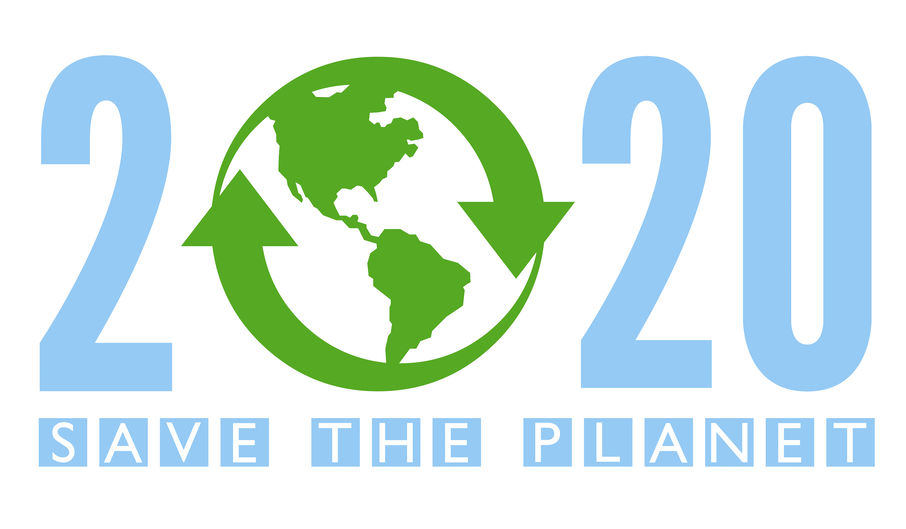HAPPY NEW YEAR!

Welcome to 2020!!!
Tired of the same old new year’s resolutions? You know, the ones you abandon before February? 2020 is the dawning of a new decade, not just a new year – why not resolve to recycle more where you work, live, learn, buy, and play? It’s not only a simple resolution, it’s one that benefits the environment, creates jobs, reduces litter, and benefits future generations.
But first, let’s recap why we should all recycle.
Why recycle? What are we wasting for?
- The UK recycling rate for Waste from Households (WfH; including IBA metal) was 45.7% in 2017, increasing from 45.2% in 2016. There is an EU target for the UK to recycle at least 50% of household waste by 2020.
- The recycling rate for WfH increased in all UK countries in 2017. The recycling rate for England was 45.2%, compared with 46.3% in Northern Ireland, 43.5% in Scotland and 57.6% in Wales. Northern Ireland saw a 3.0 percentage point increase in the recycling rate in 2017 compared to 2016 which has been attributed to the introduction of mandatory food waste collection from April 2017.
- UK biodegradable municipal waste (BMW) sent to landfill has fallen from approximately 7.8 million tonnes in 2016 (22% of the baseline 1995 value) to around 7.4 million tonnes in 2017 (21% of the baseline 1995 value). The UK is therefore still on track to meet the EU target to restrict BMW landfilled to 35% of the 1995 baseline by 2020.
- Provisional figures for 2017 indicate, 70.2% of UK packaging waste was either recycled or recovered compared to 71.4% in 2016. This exceeds the EU target to recycle or recover at least 60% of packaging waste.
10 Tips to Recycle More, Better in 2020
But just how can we recycle more, better in 2020? Here are our top tips for a new year, new recycling habits to ensure we all make new year’s resolutions we can keep.
- Start by participating. Half of what households throw away is recyclable. Check locally to know what’s accepted in your curbside recycling, what day it’s picked up, or find a nearby dropoff site.
- Know what to throw. Recycling is a global issue that requires local solutions. Many communities accept different materials. Visit your local city website to learn what materials are and are not accepted.
- Know what not to throw. The No List. Plastic bags, clothing, food and liquid, garden hoses, electrical cords, Styrofoam, needles and yard waste do not belong in curbside recycling.
- Twin the bin. Make it easy for anyone in your house to recycle – just as easy as it is to throw something away. Locate your in-home recycling bin next to your trash can. For extra credit, twin the bin in your kitchens, bathrooms, and laundry room. Most of a home’s recyclables originate in these three rooms.
- Empty your recyclables. Before you toss your empty cans, bottles, and cartons, make sure you remove food waste and such – then recycle.
- Return items to stores for recycling. Some items can’t be recycled at the curbside. These include plastic wraps and films, plastic shopping bags, and air shipping pillows. Many retail locations provide recycling centres for these items.
- Keep electronics and batteries out of the recycling cart. While these should be recycled, batteries and electronics do not belong in your curbside recycling cart or bin. These can start fires at recycling centres and in trucks. Please take a moment to check locally for hard-to-recycle items.
- Don’t bag your recyclables. Most curbside recycling and drop-off programs require recyclables to be placed directly into the cart or bin. Unless your community instructs otherwise, don’t bag your recyclables.
- Customise and download free recycling signs. Help recycle better where you live, learn, work, and play. There are many ways for you to help your family, friends, students, teammates, and colleagues recycle more, better.
- Reduce, reuse, and rethink. When it comes to sustainability, reducing, reusing, and rethinking only help to further recycling efforts to protect our planet. Find ways to reduce your consumption, reuse items, and rethink your needs and approach.For example, you can:
- Reduce by purchasing smaller amounts of food or having it pre-cut to your family’s unique needs. Remember, when it comes to sustainability, it starts at the cart.
- Reuse by eliminating single-use items and opting instead for a reusable shopping bag.
- Rethink by considering the packaging of what your purchase to see if it’s recyclable or how your approach your consumption when it comes to items like cloth versus paper napkins.
While recycling may feel universal, the truth is only slightly more than half of us can recycle at home as easily as they can throw something away, but together we’re working to change this and transform our recycling ethos for good.
